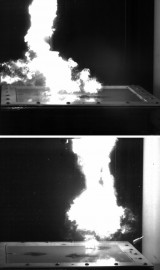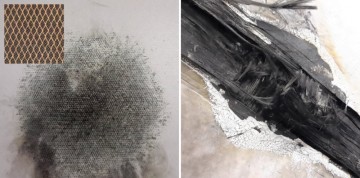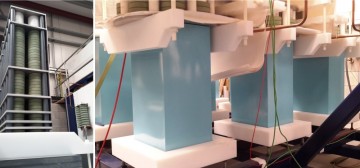Supercapacitors are a promising application for advanced materials such as high surface area nanocarbons, but what are the translational issues and market factors that researchers need to consider to win-over commercial partners? To find out more on the topic, TMR+ spoke with Franco Gonzalez, a senior analyst at IDTechEx and co-author of ‘Electrochemical Double Layer Capacitors: Supercapacitors 2014-2024’ – a 10 year forecast analysing the market, applications, technology, patent and profit trends, and key players in the sector.
Advantages over batteries
Supercapacitors don’t rely on chemical reactions and this gives them several advantages over batteries including a higher power capacity per unit mass, superior operation at low temperatures and extended operational lifetime. Truck-makers are using supercapacitors to guarantee that vehicles will start in very cold weather – a scenario where lead-acid batteries perform poorly as their energy capacity can be reduced by as much as 50%.
The longer cycle lifetimes of supercapacitors compared with batteries can lower system maintenance costs and improve reliability. It makes devices attractive for large resource power applications, particular in remote locations. In wind farms, supercapacitors are used to power actuators that change the blade pitch in high winds to protect the turbines.
Energy recovery
Although supercapacitors store less energy than batteries, they can be charged very quickly without detriment (unlike batteries). This makes them ideal for regenerative breaking systems, for example on trains and trams, which convert kinetic energy into electricity. They can also be configured to recover potential energy stored in cranes operating at cargo loading and unloading sites. “At ports, these machines can be in use almost constantly, so it’s a great opportunity for energy recovery,” said Gonzalez. “The need to reduce CO2 emissions is driving the market.”
It often makes sense to pair a supercapacitor and a battery together. “Power surges reduce the energy capacity of a battery,” he explained. “But you can protect it using a supercapacitor.” The combination can be used to extend the lifetime of batteries in renewable energy systems, or in smart phones where power-demand fluctuates depending on the functions in use.
Industry factors
As a general rule, supercapacitors are well-suited to applications with highly-variable power demands. In principle, this means they are a great match for ‘stop-start’ systems fitted to modern cars, which switch-off the engine while you are waiting in traffic or at stop lights and then restart the vehicle when you engage the gearbox. Unfortunately, it’s not that simple.
“Different industries focus on different parameters,” Gonzalez cautioned. “Auto-makers are looking for supercapacitors that are half the price of current devices as they focus on the cost per unit energy and are concerned about the selling price of the car.”
Sales of electric buses and on the other hand are much less sensitive to the initial purchase price as buyers in this sector pay more attention to the total cost of ownership of the vehicle. In this case, because supercapacitors bring down the price per charging cycle, the market is more lucrative for developers.
Today, supercapacitors are more attractive to industrial users that are open to considering the system level cost rather than the cost per unit energy of devices. But, as Gonzalez points out, supercapacitor manufacturers are nevertheless working hard at the material level to reduce price and improve device performance to offer a better cost per unit energy to customers.
Device development
Advances in materials can contribute in a number of ways to making supercapacitors more competitive in the market. Increasing the surface area of the electrodes through activated carbons and nanomaterials will drive up the capacitance and benefit the energy storage capacity of the device. At the same time, finding ways to reduce the resistance (of the active material, the electrolyte, and the porous separator) will boost the power output.
However, it is the operation of supercapacitor cells at higher voltages (V) and finding the right materials to make this happen, which may impact performance in the short to medium term. Both the power and the energy of a capacitor are proportional to V2. “Electrolytes in organic solvents can withstand 2.7 V, but developers are also looking at ionic liquids – room temperature salts – that operate at 5V,” said Gonzalez.
Devices come in many shapes and sizes, and he highlights micro-supercapacitors as a particularly exciting and growing area of research. Gonzalez advises researchers to look at lower-cost materials and manufacturing methods in the first instance. “If you want to use expensive materials then you need to find an application that will pay for that,” he commented. “Researchers need to be aware of how the industry is changing and the relative sensitivity to price of the different applications.”
Related stories on TMR+
World Economic Forum announces top 10 emerging technologies for 2014
Related articles from the journal 2D Materials




